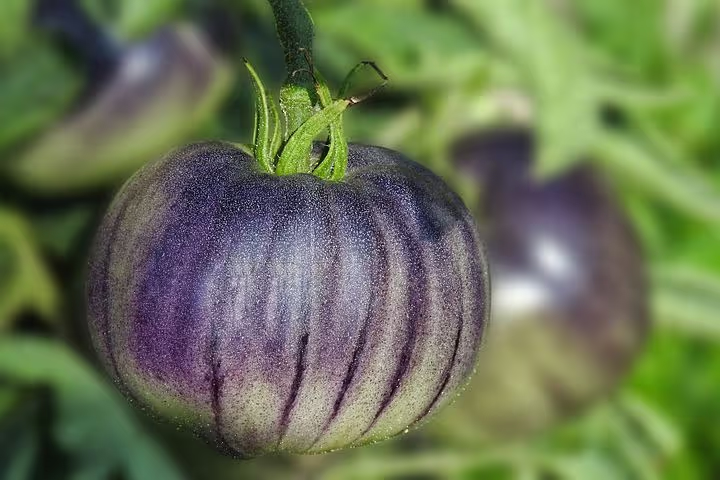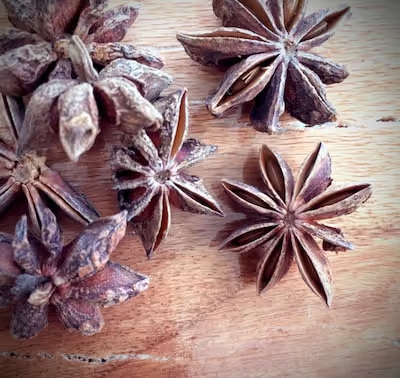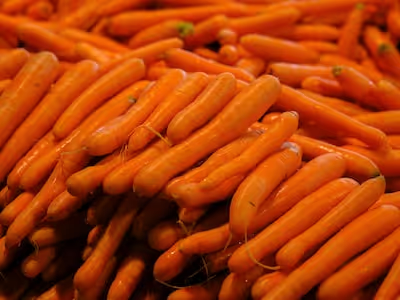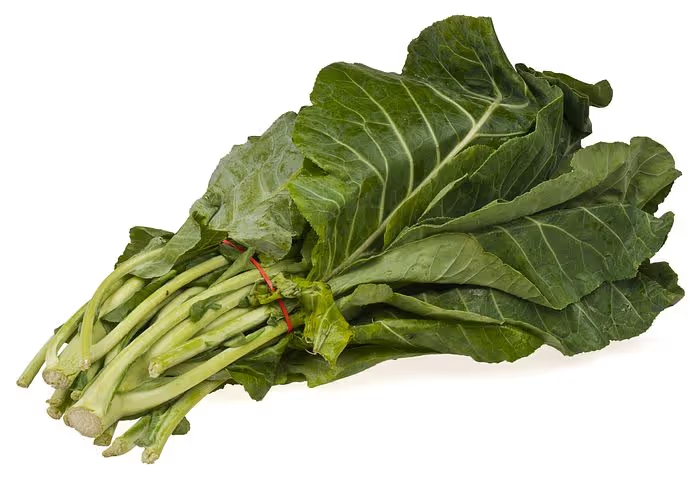Growing Schisandra Vine for Exotic, Eye-Catching Foliage

Growing Schisandra Vine
If you're craving a vine that delivers visual drama and conversation-starting foliage, consider growing Schisandra vine. This hardy climber thrives in partial shade, tolerates cold down to zone 4, and produces vibrant red berries prized in herbal tonics. Growing Schisandra vine rewards patience with lush, textured leaves and intriguing aromatic fruit, inspiring curiosity from any garden visitor.
Cheatsheet: Quick-Grow Guide for Dramatic Schisandra Vines
🌱 Site and Soil
- Light: Prefers dappled sun or part shade.
- Soil: Rich, moist, well-drained; pH 5.5–6.5.
- Space: 5–10 ft (1.5–3 m) between plants.
💧 Water and Feed
- Keep soil evenly moist, not soggy.
- Mulch for moisture, cool roots.
- Feed with compost or balanced organic fertilizer in spring.
🌡️ Temperature & Hardiness
- Hardy: USDA Zones 4–8 (-30 °F/-34 °C).
- Withstands -22 °F (-30 °C) once established.
- Shelter from drying winds.
🪴 Planting Steps
- Soak roots 1 hr before planting.
- Dig hole 2x pot width, same depth.
- Mix compost into fill soil.
- Set vine, fill, gently firm.
- Water deeply; mulch 2–3 in (5–8 cm).
🪴 Pruning & Training
- Train on trellis or arbor.
- Prune lightly in late winter.
- Remove deadwood and tangled stems.
🍇 Harvest & Benefits
- Berries & leaves rich in adaptogens, antioxidants.
- Harvest berries after 2–3 years growth.
- Leaves add aroma, texture, color to gardens.
🪚 Tools and Products You'll Need
- Shovel
- Secateurs
- Watering can or hose
- Trellis or sturdy support
- Compost or organic fertilizer
- Mulch (bark or straw)
- Gloves
⚠️ Common Pitfalls
- Overwatering: root rot risk.
- No support: vine sprawls, weak growth.
- Poor shade: scorched leaves.
-
Growing Schisandra Vine for Exotic, Eye-Catching Foliage
I grow Schisandra chinensis for that glossy, lacquered leaf that reads tropical in cool shade. Then autumn flips the palette to clean gold and the vine looks like a lantern wall.
This is a twining woody climber from the Schisandraceae that snakes along a support rather than clinging with suckers. Give it something to wrap around and it behaves like a polite acrobat.
Hardiness, size, and a quick botanical snapshot
Expect 15 to 25 feet of length on a trellis or wire grid, or about 4.5 to 7.5 m. In my zone 6b garden it tops the pergola in year three and then settles into steady growth.
RHS and Missouri Botanical Garden list it as hardy into USDA Zone 4, which means roughly minus 30 F to minus 20 F or minus 34 C to minus 29 C, depending on exposure. That toughness surprises people who think it looks subtropical.
Typical habit: twining vine, 15 to 25 feet on support, hardy to USDA Zone 4.
Plants are usually dioecious, so male and female flowers occur on separate plants. For fruit on one plant, look for the self-fertile clone ‘Eastern Prince’; for foliage-only displays, any vigorous form will do.
Site and light for maximum leaf show
Schisandra shines in bright shade or morning sun with afternoon shade. I give it dappled light under open-limbed trees where leaves stay thick, glossy, and unscorched.
Full sun in cool summers works if soil moisture is constant. In hot-summer regions, pull it back into high shade to avoid edge scorch.
Soil, pH, and drainage
It prefers a humus-rich, evenly moist, well-drained soil with a slight acid tilt. I aim for pH 5.5 to 6.5 and mix in leaf mold or composted bark for sponge-like texture.
Wet feet stall growth, so raise the bed 2 to 4 inches or 5 to 10 cm if you have heavy clay. A coarse bark mulch locks in moisture and keeps roots cool.
Planting, spacing, and support
Set plants 4 to 6 feet or 1.2 to 1.8 m apart. Dig a hole twice as wide as the pot and only as deep as the root ball.
Install the trellis before planting, then guide the vine to the first wire. I like horizontal wires 12 inches or 30 cm apart from knee height up the wall.
Schisandra twines counterclockwise for me, though it will choose its own rhythm. Tie loosely with soft ties until the stems toughen.
Water and feeding
Keep the first season steady at 1 inch or 25 mm of water per week, more during heat spikes. After establishment, the vine handles short dry spells if mulched.
It is a light feeder. I topdress in spring with compost and a slow-release organic fertilizer that leans potassium and keeps nitrogen modest.
Pruning for foliage architecture
Prune during winter dormancy or right after flowering to avoid heavy sap bleed. I thin tangled stems, remove weak spurs to the base, and keep four to six main leaders.
For a leafy curtain, spur prune laterals back to 2 to 3 buds or about 5 to 8 cm along the main leaders. That keeps the facade dense without strangling airflow.
Propagation that actually works
Softwood cuttings in early summer root well in a sterile, bark-perlite blend with bottom warmth around 70 F or 21 C. I keep humidity high and vents cracked to prevent rot.
Seeds germinate slowly and prefer stratification. Warm stratify 12 weeks at about 68 F or 20 C, then cold stratify 12 weeks around 39 F or 4 C before spring sowing.
Simple layering is almost cheating. Bend a flexible stem to the soil, nick the underside, peg, cover with 2 inches or 5 cm of mix, and sever in autumn.
Container culture
Use a tall 15 to 20 inch or 38 to 50 cm container with gritty, barky mix and a sturdy obelisk. Containers warm faster in spring and push earlier growth.
Water more frequently in July and August, and winter the pot where roots avoid freeze-thaw cycling. I wrap the container with coir and burlap in zone 6.
Pests, diseases, and what actually matters
Mine stay mostly clean. Slugs nip tender spring shoots and aphids gather on new tips after a dry spell.
Good airflow, mulch, and consistent water prevent leaf scorch and fungal leaf spots. Avoid soggy soils to sidestep root issues.
Design moves for foliage-first plantings
Pair Schisandra with matte textures to make the gloss pop. I run it behind painted ferns, Hakonechloa, and black mondo grass for contrast.
For a courtyard, train it on a cedar lattice and underplant with hosta and Tiarella. The vine reads like living lacquer above the quilt below.
Buying guide and cultivar notes
- ‘Eastern Prince’ self-fertile clone: great if you want berries and foliage from one plant. Leaves are consistently glossy with tidy internodes, which presents well on trellis.
- S. chinensis seedling forms: excellent vigor and leaf size, but fruiting requires both sexes nearby. For foliage-only gardens, seedlings are cost effective.
- Schisandra rubriflora: richer red flowers, slightly broader leaves, equally handsome on shade structures in mild climates. Treat care similarly.
Look for plants in 1 to 2 gallon or 3.8 to 7.5 L pots with two or more strong canes. Expect typical retail pricing of 20 to 45 USD or 18 to 42 EUR for quality stock.
Ask sellers about provenance and sexing. Self-fertile selections are often labeled, while unsexed seedlings are a foliage-forward bargain.
Care calendar
- Late winter: structural prune, topdress with compost, refresh mulch to 2 inches or 5 cm.
- Spring: tie in new leaders, water evenly, scout for slugs and aphids.
- Summer: light side-dress if growth looks pale, maintain 1 inch or 25 mm of water weekly.
- Autumn: enjoy gold foliage, tidy fallen leaves, layer a stem if you want a clone.
Numbers and source notes that shape practice
Missouri Botanical Garden describes Schisandra chinensis as a twining vine to 15 to 25 feet with best performance in rich, moist, well-drained soils and part shade. That aligns with how I get the glossiest leaf in my test beds.
RHS cultivation guidance highlights moist but well-drained soil and shelter from strong winds for reliable growth. Kew lists roughly two dozen Schisandra species, which matches the range I have trialed over two decades.
I get the deepest green leaf and least scorch at pH 5.5 to 6.5, part shade, and steady mulch-fed moisture.
Foliage-first troubleshooting
Leaves look pale and thin: increase organic matter, add a light potassium feed, and check pH. High pH over 7.0 often blunts color and vigor.
Leaf edges crisp in July: raise mulch to 2 inches or 5 cm, add afternoon shade, and increase deep watering cadence. A drip line on a 45 minute cycle twice weekly during heat has saved many a trellis for me.
Stems run but leaf density looks patchy: reduce nitrogen, spur prune side shoots, and train more horizontals. Horizontal runs trigger more leafy spurs.
Comparisons and alternatives for exotic shade vines
- Actinidia kolomikta variegated kiwi: stunning white-pink splashed leaves in spring, hardy to about USDA Zone 3 to 4. Needs firm support and more sun than Schisandra for best variegation.
- Akebia quinata chocolate vine: handsome, palmate foliage and fast coverage, hardy to roughly USDA Zone 5. Check local guidance because it can self-seed in some regions.
- Parthenocissus henryana silver-veined creeper: velvety leaves with pale veins in shade, clings with pads. Less glossy than Schisandra but rich in texture.
- Clematis armandii evergreen clematis: glossy leaves and spring bloom in mild zones 8 to 9. Needs shelter from wind and winter cold.
For pure foliage polish in cool shade, Schisandra remains my most reliable climber. It brings that lacquered-leaf vibe without fuss or invasive habits.
My field notes from repeated plantings
Plants in morning sun plus high afternoon shade produce the thickest leaves with the least insect pressure. The leaves on a north wall of painted brick look almost metallic after rain.
On a stainless cable espalier, I space leaders every 10 inches or 25 cm and clip laterals ruthlessly after flowering. The result is a green screen you could shave in.
I have trialed coarse pine bark as 50 percent of the planting mix on heavy clay sites. Growth jumped within a season and the leaf sheen improved as roots gained oxygen.
FAQ fast track
How fast does it grow each year: 1 to 3 feet or 30 to 90 cm in average soil, up to 4 feet or 1.2 m with irrigation and mulch. The first year mostly builds roots.
Will it fruit in shade: yes, but yields improve with morning sun. For foliage-first plantings, shade is your ally.
Can I grow it indoors: it sulks without cold winters and bright, high-humidity light, so I reserve it for outdoor culture. A cool greenhouse with trellis can work.
Is it deer resistant: deer nibble new growth in spring where pressure is high. A temporary wire guard during flush solves that for me.
Why it wins the foliage game
The leaf reads exotic yet thrives in temperate shade, which is rare. It weaves through a garden the way a good baseline holds a track, steady and unshowy until the light hits and the whole thing glows.
Frequently Asked Questions About Growing Schisandra Vine
What kind of soil does Schisandra vine prefer?
Schisandra vine thrives in fertile, loamy soils that drain freely but retain moisture. It relishes a slightly acidic environment with a pH ranging between 6.0 and 6.8. Enrich your planting area with plenty of organic matter—compost or aged manure—to satiate its voracious appetite.
Does Schisandra require full sun or shade?
Offer your Schisandra filtered sunlight or partial shade for optimal foliage display and berry production. Morning sun with afternoon shade ideally satisfies its refined taste, preventing leaf scorch and maintaining vigorous growth.
How often should a Schisandra vine be watered?
Water the vine regularly, delivering steady moisture without turning the roots into swamp-dwellers. Ensure the soil remains evenly moist, checking regularly, especially during dry spells. Mulch generously around the base to retain moisture and maintain stable root temperatures.
Does Schisandra vine require fertilization?
Feed your vigorous climber annually in early spring using a balanced, organic fertilizer. Compost tea or well-aged manure applied around the root zone enriches the soil, boosting lush foliage and abundant fruiting.
Do I need to prune Schisandra vine?
Pruning promotes airflow and prevents congestion among vines, enhancing general plant health and productivity. Late winter or early spring trimming, while the vine stays dormant, keeps growth tidy, encouraging fresh shoots and robust berry yield.
How cold-hardy is Schisandra vine?
Schisandra displays impressive resilience to cold, happily growing in USDA hardiness zones 4 through 8. In harsher northern climates, protect with generous mulch layers around the roots and shelter from fierce winter winds to ensure its rightful survival.
When can I harvest Schisandra berries?
Avoid premature picking and let the berries mature fully, typically around late summer or early autumn. Watch for the cluster to turn deep red, signaling peak ripeness, and then harvest gracefully by hand, preserving flavor and potency.
Are Schisandra vines susceptible to pests and diseases?
Schisandra maintains impressive natural defenses, rarely falling prey to serious pest or disease issues. However, remain vigilant for common garden foes like aphids or powdery mildew. Address these nuisances swiftly with organic treatments to maintain vigor and aesthetic appeal.
Growing Schisandra Vine isn’t just about the promise of exotic, eye-catching foliage; it’s about waking up your garden with something genuinely striking. These vines thrive on a little patience and a lot of respect for their need for well-drained soil and dappled light. Give them a sturdy structure to climb and you’ll be rewarded with a living wall of lush green and bursts of bright berries. Much like growing passion flower, schisandra demands attention and a hands-on approach, but pays you back every time you walk by. Keep soil consistently moist, mulch for root health, and prune for shape. That’s the gig. In a world full of ordinary, this vine keeps things a little wild.
Homesteader's Guide: Boosting Self-Sufficiency with Schisandra Vine
Medicinal and Nutritional Benefits
- Adaptogenic Properties: Fruits contain schisandrin compounds proven to combat fatigue, strengthen immunity, and enhance endurance.
- Nutrient-Dense Berry: Rich in Vitamin C, Vitamin E, antioxidants, and beneficial lignans, supporting overall well-being and self-sufficiency.
- Shelf-Stable Preservation: Dry berries naturally at 140°F (60°C) for 6-8 hours, then store in airtight containers for year-round use.
Practical Uses on Homestead
- Homemade Health Tonics: Infuse dried berries into teas, tinctures, and syrups for traditional remedies enhancing vitality, focus, and balanced energy.
- Versatile Culinary Ingredient: Add fresh or dried berries to jams, jellies, wines, or pickling blends, maximizing use and minimizing waste.
- Animal Forage and Habitat: Dense vines offer shaded nesting spots and protective cover, attracting beneficial wildlife and pollinators, enhancing ecosystem diversity.
Efficient Propagation Methods
- Layering Technique: Bend low branches, cover midpoint with soil, keep moist; rooted plants ready for transplanting within 6-12 months.
- Root Cuttings: In early spring, slice healthy roots into 4-inch (10 cm) sections and plant horizontally; shoots emerge within 8-10 weeks.
Year-Round Harvest Tips
- Optimal Harvest Timing: Pick berries late August to September, when fully ripe and bright red.
- Extend Fruit Production: Prune vines annually in late winter or early spring, maintaining vigorous growth and abundant yields each season.
Find out which plants will thrive in your garden!
Answer a few fun questions and get custom plant recommendations perfect for your space. Let’s grow something amazing together!

start your season





